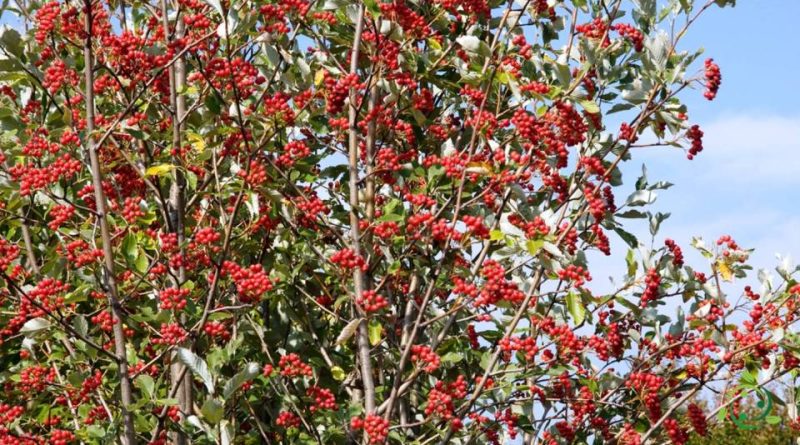How the common whitebeam is grown
How the common whitebeam is grown
The common whitebeam (Sorbus aria (L.) Crantz 1763) is a plant of the Rosaceae family, native to central-southern Europe and North Africa. It grows up to 1200 meters above sea level, in particular in the oak groves. In Italy it grows in all regions.
This plant has white flowers gathered in inflorescences with erect corymbs of 5-8 cm.
The fruits are 1.5 cm ellipsoidal, orange-red when ripe (September-October). The fleshy exocarp is a bit floury, but pleasantly sweet.
Cultivation –
For the cultivation of the common whitebeam, remember that it is a plant that prefers dry soils and grows well even in stony places.
Its cultivation is therefore possible in more marginal areas as it is a rustic plant with limited needs also from a nutritional point of view.
However, care must be taken to cultivate it in areas with abundant light.
Furthermore, Sorbus aria is a plant that resists the cold very well. The ripening of the fruits takes place in the period from September to October. As with other plants that have become marginal, its cultivation would also be necessary to give greater flowering biodiversity for pollinating insects.
Uses –
The fruits of Sorbus aria, in the past, in difficult times, have been a source of sustenance due to their high content in starch and sugars.
The fruits, in times of famine, given their floury pulp, were ground and mixed with flour to make bread.
Today it is used for trees also because, for most of the year, it is very attractive thanks to the spring and autumn color of the leaves and that of the fruits.
Although today its fruits are no longer used for human consumption, it is still used for certain typical regional recipes, for jams and jellies.
The fruits can be used to flavor grappa, with an excellent result. At one time perhaps a brandy was also obtained from it. As with the rowan (Sorbus aucuparia L.), the berries are appetizing to birds and were once used by hunters as bait.

